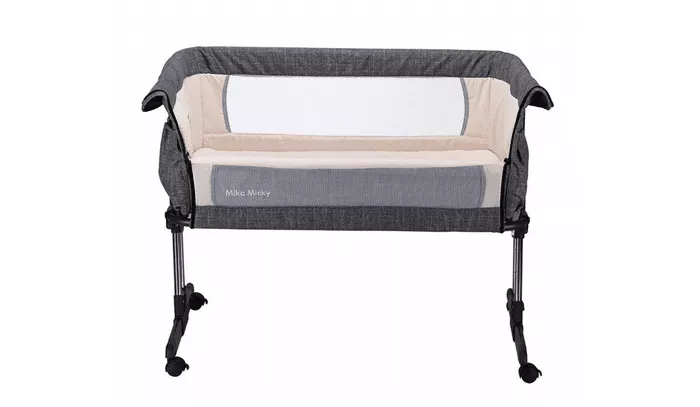When preparing for the arrival of a new baby, parents meticulously plan every aspect of their nursery, ensuring a safe and comfortable environment for their little one. Among the essential items to consider is the crib mattress, a vital component that directly impacts your baby’s safety, comfort, and quality of sleep. With a myriad of options available on the market, selecting the right crib mattress can be overwhelming. In this comprehensive guide, we delve into the key factors to consider when choosing the perfect crib mattress for your baby.
Safety First: Certifications and Standards
Safety is paramount when selecting a crib mattress for your baby. Look for mattresses that meet rigorous safety standards and certifications, such as those set by the Consumer Product Safety Commission (CPSC) and the American Society for Testing and Materials (ASTM). Additionally, mattresses certified by organizations such as GREENGUARD or CertiPUR-US ensure that the mattress materials are free from harmful chemicals and emissions, promoting a healthier sleep environment for your baby.
Firmness Matters: Supportive Yet Comfortable
The firmness of a crib mattress is crucial for your baby’s safety and development. According to the American Academy of Pediatrics (AAP), a firm mattress reduces the risk of Sudden Infant Death Syndrome (SIDS) by providing a stable sleeping surface and preventing suffocation hazards. However, firmness doesn’t equate to discomfort. Opt for a mattress that offers ample support while still providing a comfortable sleeping surface for your baby.
Size and Fit: Perfect Match for Your Crib
Ensure that the crib mattress fits snugly inside your crib with no more than a finger’s width of space between the mattress and the crib frame. A well-fitted mattress prevents the risk of entrapment and ensures your baby’s safety during sleep. Most standard crib mattresses come in a size of 28 inches by 52 inches, but it’s essential to double-check the dimensions of both the mattress and your crib to guarantee a perfect fit.
Material Composition: Hypoallergenic and Breathable
The materials used in a crib mattress can significantly impact your baby’s comfort and health. Opt for hypoallergenic materials such as organic cotton, bamboo, or natural latex to minimize the risk of allergic reactions and respiratory issues. Additionally, choose a mattress with adequate breathability to promote airflow and regulate temperature, reducing the risk of overheating and providing a more comfortable sleep environment for your baby.
Waterproof and Easy to Clean: Mess-Proof Solutions
Babies are notorious for creating messes, making waterproofing a desirable feature in a crib mattress. A waterproof cover or mattress pad protects the mattress from spills, leaks, and stains, prolonging its lifespan and keeping it hygienic for your baby. Look for mattresses with removable, machine-washable covers for easy cleaning and maintenance, saving you time and effort in caring for your baby’s sleep surface.
Durability and Longevity: Investment for the Future
A crib mattress is an investment in your baby’s comfort and safety, so prioritize durability and longevity when making your selection. Choose mattresses made from high-quality materials and construction techniques that withstand the test of time, ensuring that your baby can use the mattress throughout their infancy and possibly beyond. While premium mattresses may come with a higher price tag, they often offer superior durability and performance, making them a worthwhile investment in your baby’s sleep quality.
Ventilation and Temperature Regulation: Optimal Sleep Environment
Proper ventilation and temperature regulation are essential for creating an optimal sleep environment for your baby. Look for mattresses with venting holes or breathable designs that promote airflow and prevent the accumulation of heat and moisture, reducing the risk of discomfort and enhancing sleep quality. Additionally, consider the climate in your region and choose a mattress with temperature-regulating properties, such as gel-infused foam or breathable fabrics, to keep your baby comfortable year-round.
Dual-Sided Designs: Adaptability for Growth
Some crib mattresses feature dual-sided designs, with one side tailored for infants and the other for toddlers. Infant sides typically offer extra firmness to support your baby’s developing spine, while toddler sides provide a slightly softer surface for increased comfort as your child grows. Dual-sided mattresses offer versatility and longevity, accommodating your baby’s changing needs as they transition from infancy to toddlerhood, making them a practical choice for budget-conscious parents.
Warranty and Return Policy: Peace of Mind
Before making a final decision, review the warranty and return policy offered by the mattress manufacturer. A generous warranty provides reassurance of the mattress’s quality and durability, while a flexible return policy allows you to exchange or return the mattress if it doesn’t meet your expectations. Familiarize yourself with the terms and conditions, including any exclusions or limitations, to ensure that you’re fully protected in the event of any issues or defects with the mattress.
User Reviews and Recommendations: Insights from Fellow Parents
Lastly, don’t underestimate the power of user reviews and recommendations when choosing a crib mattress. Seek feedback from fellow parents, either through online reviews, parenting forums, or recommendations from trusted friends and family members. Real-life experiences and insights can offer valuable perspectives and help you make an informed decision based on firsthand accounts of the mattress’s performance, durability, and comfort.
In conclusion, selecting the perfect crib mattress requires careful consideration of safety, firmness, size, material composition, waterproofing, durability, ventilation, adaptability, warranty, and user feedback. By prioritizing these key factors and conducting thorough research, you can ensure that your baby enjoys a safe, comfortable, and restful sleep environment from infancy through toddlerhood.


